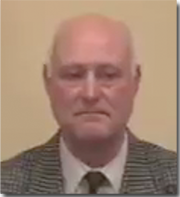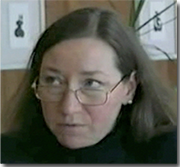News & Press Releases
Green Minister Gormley tells TD of EMF policy and how masts are 'necessary' above health of people in built-up areas
In response to a query from Northside TD Tommy Broughan, John Gomley, Minister for the Environment, explains that masts are located in built-up areas only "as a last resort". This begs the question, "Last resort for whom - the companies or the people?" Click here to read more. Click here to read more...
What will a new agency achieve with extended powers about a Tetra system already in place? No consolation for those near masts
Sean O’Toole of the Environmental Radiation Policy/Air Quality Section based in Wexford, scene of some of the country’s most vocal anti-mast campaigns continues to cling to policies which support industry-sponsored research and standards based on the heating properties of microwave radiation. Click here to read his 1 October microwave update. Click here to read more...
SEN. DALY CALLS FOR NATIONWIDE IMPLEMENTATION OF KERRY’S 1km RULE FOR MOBILE PHONE MASTS
Senator Mark Daly has welcomed Kerry County Council’s decision to refuse permission for the proposed construction of a 12 metre high mobile phone mast in Glenbeigh, Co. Kerry and spoke in the Seanad this week on the case in Annascaul, Co. Kerry where An Bord Pleanála granted permission for the erection of a mast despite the objection raised by Kerry County Council. Senator Daly has long voiced his opposition to the plan on a public health and safety basis. Having already expressed his concern over mobile phone masts in previous debates in Seanad Éireann, the Senator cited a personal vested interest in the issue, both his aunt and uncle died of cancer and having lived and worked less than a 1km away from a mobile phone mast. Furthermore, the erection of mobile phone masts within a kilometre of schools and hospitals is prohibited under Kerry County Council’s Development Plan, a rule which would have been broken if the proposed development at Glenbeigh had gone ahead. The Development Plan states that 'It is the policy of the Planning Authority that telecommunication masts shall not be located within 1 kilometre of residential properties, schools, hospitals or any structures where there are is human occupancy for residential or daily work purposes'. In recognising the seriousness of the issue, Senator Daly called for Kerry Council’s standard rule of 1km to be implemented at a national level and calls on Minister Gormley to include it on the forthcoming Planning and Development Bill. Speaking in the Seanad, Senator Daly stated that 'We must have a national policy in regard to the siting of mobile phone masts. I ask the Leader to facilitate a debate with the Minister which should include consideration of a nationwide provision similar to Kerry County Council's 1km rule in respect of the siting of all masts but bearing in mind the need to provide broadband.' Click here to read more...
391,000 Irish People Could Develop Brain Tumours Due to Mobile Phones by 2020 - Costs to the Health Service Estimated at almost €70 billion
391,000 Irish People could develop brain tumours due to mobile phones by the year 2020. On Day 2 of the Global Conference chaired by Senator Mark Daly this startling figure came to light. In his presentation to the EM Radiation Trust at National Academy of Science in the UK, Lloyd Morgan, Director of the Brain Tumour Registry in the US predicted stark figures. Using the same percentage of people who developed cancer from smoking (10% of smokers developed lung caner), Mr. Morgan said “If this figure was to be used in the case of mobile phone users 1.6 million Americans would develop brain tumours by 2020 compared with 50,000 today”. The cost of this explosion in cancer cases would cost an estimated $400bn. Senator Daly, who chaired the session, commented on the figures saying that in an Irish context, due to our status as the 6th highest mobile phone penetration in EU (ComReg 2007), over 391,000 Irish people could develop brain tumours by 2020. The estimated cost to the Health Service, when using the American statistics, is at nearly €70 billion. Click here to read more...
The propaganda war rages in the U.K. - Ireland to follow?
The government has promised to fund a new Systems Biology Department at UCD while buying Tetra from Motorola before it left Ireland in 2007. This type of arrangement is an example of how money is spent but the result of research remains proprietary. This means that scientific knowledge is owned by the entity that pays for it. The following article was submitted by an AIRP member and is reproduced with the full permission of Mast Sanity.Click here to read more...
International EMF conference in Stavanger, Norway 17 Nov. 2009
An international conference on EMf is scheduled for 17 Nov. at Stavanger, Norway. This is an opportunity to hear presentations on electromagnetic fields (EMFs) and health effects. The conference is an excellent opportunity to update knowledge on documented health effects from wireless technologies such as mobile phones and wireless networks.Click here to read more...
Clearwire takes Intel’s WiMAX signal to Chicago
Clearwire Corp. and the financially-troubled Sprint Nextel Corp. are bringing WiMAX broadband service to Chicago by year-end, fulfilling a long-awaited plan to blanket the area with turbo-charged Internet speeds accessible by mobile gadgets. In Ireland, Clearwire offers 512 kbit/s, 1 Mbit/s or 2 Mbit/s download / 128 kbit/s upload. Clearwire Ireland Ltd. is based at Fitzwilliam Hall, Dublin 2. WiMAX is broadcast over a 20 km radius around NUI Maynooth, Co. Kildare.Click here to read more...
Is Ireland the new wireless Silicon Valley or Death Valley?
Ireland lays its claim to be the Silicon Valley of an emerging wireless world claims Silicon Republic e-zine saying “An abundance of wireless spectrum - plus the arrival of WiMAX - will change the game here.Click here to read more...
Are EMF /ELF to blame for increase in epilepsy?
Out of the shadows, By Rita de Brun, Monday August 03 2009Epilepsy is now twice as common as diabetes in Ireland according to the Irish Independent, and one in 10 of us will at least experience a mild seizure in our lives yet the isolating illness rarely makes the headlines.Click here to read more...
July 21, 2009, Austrian AUVA Insurance Company Presents Research Report on Health Risks from Cell Phone Radiation
Nonthermal Effects Confirmed; Exposure Limits Challenged; Precaution Demanded.All across Europe the debate on exposure limits has flared up; insurance companies do not insure cell phone providers because of the incalculable health risks. Click here to read more...

Interview with Prof. Olle Johansson on KFM 97.6fm radio. Click here to open audio player.
 Prof. Olle Johansson in Leixlip
Prof. Olle Johansson in LeixlipCo. Kildare
 Barrie Trower in Cahir
Barrie Trower in CahirCo. Tipperary
 Blake Levitt
Blake LevittScience Journalist
 Dr. Magda Havas
Dr. Magda HavasB.Sc. Ph.D. Environmental & Resource Studies, Trent University, Peterborough, Ontario researched the dangers of wi-fi for San Francisco and the injuries to cattle and farmers.








